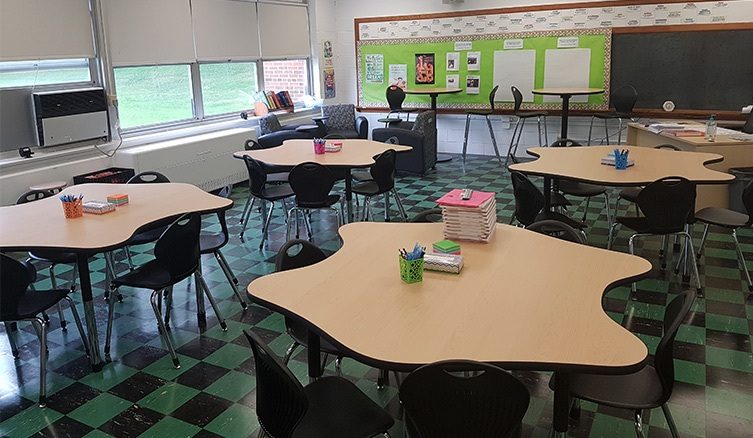Creating an Optimal Learning Environment
By Academia Furniture
Posted May 4, 2017 in Learning Environments
On the first day of 7th grade, I walked into a new school and was greeted by one of the strangest sights I had seen in my young life. Where I had expected classrooms, there were none. The whole top floor of the school was one giant open space with only bookcases and felt covered dividers to signify where one “classroom” ended and another began. While it looked interesting, however, it soon became clear that this open classroom concept was not the most practical of design ideas. Simply put, the noise from tens of students and several teachers speaking at once was greatly distracting and definitely not conducive to proper learning. Within just a few years, walls between classrooms were once again erected.
Looking back now, however, I realize that at the very least, our school district was pushing boundaries and exhibiting a desire to implement a new type of learning environment that at the time was thought to be more beneficial to students than the status quo.
Nowadays, so much more is known about the importance of an intelligently and thoughtfully designed learning environment. It is widely accepted that where children learn is just as important as what they learn. Extensive research in a wide variety of fields and disciplines including psychology, physiology, ergonomics, architecture and interior design, has shown an indisputable connection between the design of the physical learning environment and the academic achievement of the students.
Experts agree that a learning environment that is designed to be both cognitively and physiologically impactful will naturally provide students with the motivation to be active participants in their own learning process. This, in turn, will benefit the students throughout their school years and well into whatever career path they chose to pursue. Dr Ellen Pruyneis, a learning consultant in the Ashridge Centre for Research in Executive Development states that it is imperative to “pay attention to the features of the learning environment. When an individual is engaged in a memorable learning experience, they encode the features of the learning environment, as well as what they are learning, in the neural pathways of their brain”.
Therefore, we can fairly extrapolate that a classroom that is properly designed: comfortable, uncluttered, easily maneuverable, stimulating yet relaxed, memorable in a positive way, actually helps students to better retain information and even to retrieve that information years later simply by envisioning the classroom it was learnt in!
So, what are the most important design points to take into consideration to create such an impactful environment? Modular desk hubs, customized learning stations and integrated technology and ergonomically sound furniture are now the ideal classroom components. Today’s most effective learning spaces are all about actively involving the student via functionality, adaptability and comfort. According to experts in the education field, they are also about supporting and encouraging students’ various learning styles and strengths.
Achieving this optimum learning environment can only come through the cooperation of school boards, administrators, principals and teachers working together with architects and interior designers who specialize in school settings. From tweaking and maximizing existing classrooms, to designing an entire school from scratch, it is imperative that all parties collaborate to make the most of budget, space and specific requirements. Achieving this may take some hard work, but Imagine students walking into a classroom of your design feeling like they have just been handed an invitation to a magical space that allows them to excel according to their own capabilities, to interact with both teachers and fellow students as opposed to simply being lectured at and to be active and willing participants in their own lifetime learning process!
